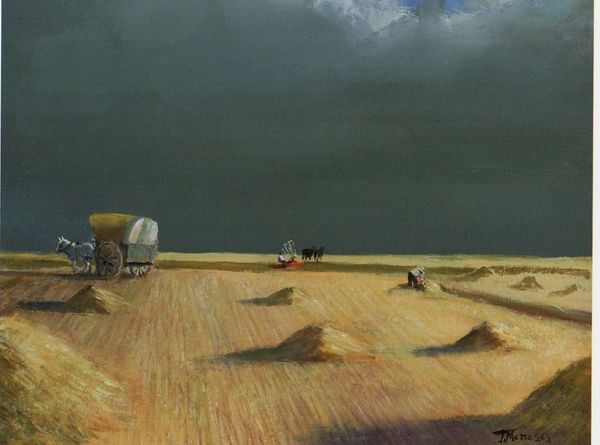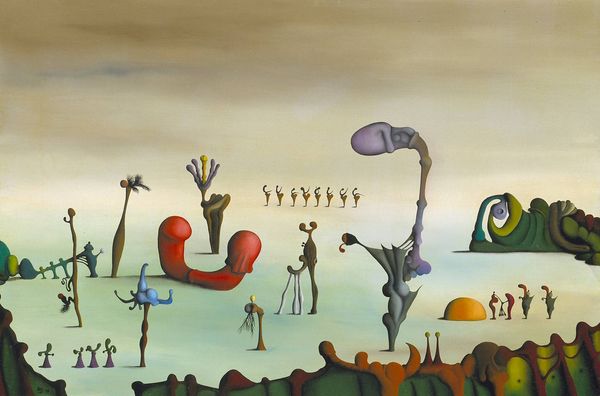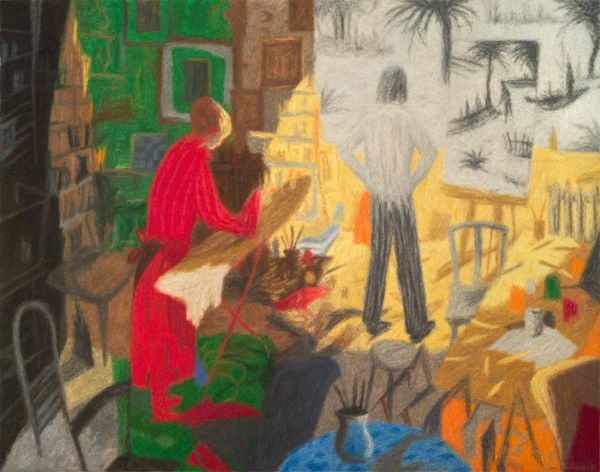
painting, acrylic-paint
#
painting
#
landscape
#
acrylic-paint
#
figuration
#
oil painting
#
genre-painting
#
modernism
#
watercolor
Dimensions: 38 x 55.5 cm
Copyright: Benny Andrews,Fair Use
Curator: Benny Andrews created "Leaving Home" in 2004 using acrylic paint. Look at this sparse landscape with its figures poised at the intersection of dwelling and departure. What's your immediate take? Editor: It evokes a profound sense of loneliness and displacement. The muted color palette and the almost cartoonish simplicity of the figures contribute to an overall feeling of melancholy and, frankly, of uprootedness. Curator: Andrews, throughout his career, returned to themes of displacement and the plight of marginalized communities. To understand this piece, it’s important to recognize Andrews' deep commitment to social justice. He himself experienced displacement during the Great Migration. Editor: Yes, situating Andrews's personal history alongside the historical backdrop of forced migrations during the 20th century allows the viewer to address the intersectionality of race, class, and geographical mobility. Look at the faces – we can't see their eyes, a deliberate choice which effectively strips them of individuality. It speaks to a larger crisis of identity born from these kinds of circumstances. Curator: The figures by the cabin are a stark contrast to the broken-down car. Are they being left behind or have they become a new welcoming committee? And what of that dilapidated home—does it offer protection or imprisonment? Editor: I’m especially drawn to how the artist represents gender roles in transition during periods of duress and societal stress. The women standing by the entrance of the cabin embody an anxious stability, a quiet contemplation that seeks refuge and community even in isolation. It reveals much about a shifting domesticity amid immense pressures to adapt, resist, and subsist. Curator: So, how does understanding Andrews' sociopolitical context deepen our reading of "Leaving Home," then? Editor: It highlights the historical continuities between different eras and experiences of migration and allows viewers to see the individuals portrayed as embodying universal challenges to contemporary conditions that perpetuate displacement in its varied forms—environmental, economic, political. Curator: Indeed, art, when coupled with activism, enables audiences to interpret their personal, as well as historical relationships with the work in ways that speak to a contemporary politics of experience. Thank you, that was enlightening. Editor: Thanks to you as well. I leave now with an even greater respect for this very impactful painter.
Comments
No comments
Be the first to comment and join the conversation on the ultimate creative platform.













